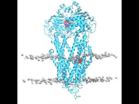(Press-News.org) Understanding the evolutionary history of organisms is important for myriad reasons. To name a few, information about relationships between species can be used to guide the classification of biodiversity, inform conservation policies aimed at protecting threatened species, aid in tracking the spread of pathogens, and can even play a role in the discovery of new medicines.
Scientists depict the relationships between species with evolutionary trees, also called phylogenies. A phylogeny shows the accumulation of species through time and the relationships between these species, much like a family tree shows how you are related to the other members of your family.
By analyzing the similarities and differences between DNA sequences of different organisms, biologists can infer relatedness between them. But what if the DNA of the species-in-question is so similar that you can't tease the relationships apart?
Luckily, different regions of DNA evolve at different rates. Some regions, such as protein-coding genes, evolve at a relatively slow rate. Introns - the non-coding part of genes - evolve at a much higher rate and are, therefore, potentially useful at resolving evolutionary relationships between closely related species.
"There was a major gap for researchers using genomic DNA sequences to understand the evolution of species complexes," says Ryan Folk, lead author of a study in a recent issue Applications in Plant Sciences. "In these groups, the boundaries between species are often quite blurry, making it difficult to accurately infer relationships."
Folk and colleagues at The Ohio State University and University of Memphis have developed a technique to capture the rapidly evolving intronic regions of the genome in hopes of increasing our knowledge of evolution in these difficult groups.
The new study describes a method for targeting introns by utilizing publicly available genomic data to find these rapidly evolving regions. Biotinylated probes are constructed based on these sequences to chemically 'capture' the intron-containing genes from the study species' genome. The rest of the DNA from the sample is then simply washed away, leaving only those targeted sections.
"Previous studies utilizing similar techniques have focused primarily on slowly evolving regions, such as exons, due to concerns with capture success," explains Folk. "The problem with this is wasted DNA sequencing effort. The data are perfectly good, but with a much slower mutation rate it's necessary to increase the amount of data you target to obtain an equivalent amount of evidence for evolutionary relationships among species."
The protocol developed by Folk and colleagues turned out to be more successful than anticipated.
"When we designed this project, we really had no idea how well targeting introns would work. Targeting a DNA region depends on sequence recognition between the unknown sample and a known 'target' sequence from a close relative. Of course, for a rapidly evolving region, the target will not resemble the sequence of a new sample as closely, resulting in a greater risk of failure for the experiment. But our results show that introns were not particularly difficult to sequence as compared to the more commonly targeted exons."
The method was tested on a recent, rapid radiation of plants in the Heuchera group. Over 270 DNA markers were targeted and sequenced using next-generation sequencing. The team found introns to have a fourfold increase in mutation rate compared to exons, allowing them to confidently resolve evolutionary relationships between very closely related taxa, something previously not possible in this group. On top of this, complete organellar (plastid and mitochondrial) genomes were assembled for one species.
"Although often difficult to answer, questions relating to species complexes are sometimes the most interesting because they represent the recent or ongoing formation of new species. We are optimistic that our new method for targeting intronic regions will provide scientists with a valuable tool to answer questions in these difficult groups."
INFORMATION:
Ryan A. Folk, Jennifer R. Mandel and John V. Freudenstein. 2015. A protocol for targeted enrichment of intron-containing sequence markers for recent radiations: A phylogenomic example from Heuchera (Saxifragaceae). Applications in Plant Sciences 3(8): 1500039. doi:10.3732/apps.1500039
Applications in Plant Sciences (APPS) is a monthly, peer-reviewed, open access journal focusing on new tools, technologies, and protocols in all areas of the plant sciences. It is published by the Botanical Society of America, a nonprofit membership society with a mission to promote botany, the field of basic science dealing with the study and inquiry into the form, function, development, diversity, reproduction, evolution, and uses of plants and their interactions within the biosphere. APPS is available as part of BioOne's Open Access collection.
For further information, please contact the APPS staff at apps@botany.org.
New research led by NYU Langone Medical Center has uncovered why a particular strain of Staphylococcus aureus -- known as HA-MRSA -- becomes more deadly than other variations. These new findings open up possible new pathways to vaccine development against this bacterium, which the Centers for Disease Control and Preventions says accounts for over 10,000 deaths annually, mostly among hospital patients.
In a series of experiments in mice and in human immune cells in the lab, recently published in the journal Nature Communications online Sept. 2, the NYU Langone team found ...
Almost half of the risk of developing testicular cancer comes from the DNA passed down from our parents, a new study reports.
The research suggests genetic inheritance is much more important in testicular cancer than in most other cancer types, where genetics typically accounts for less than 20 per cent of risk.
The findings suggest testing for a range of genetic variants linked to testicular cancer could be effective in picking out patients who are at substantially increased risk - potentially opening up ways of preventing the disease.
Scientists at The Institute ...
UK enters top ten
All regions of world represented in lower rankings
Experts call for more age specific data about older people's lives
Switzerland is the best place in the world for older people to live, closely followed by Norway and Sweden, according to a new report from HelpAge International, working in partnership with the University of Southampton.
The Global AgeWatch Index assesses the social and economic wellbeing of the older population in 96 countries around the world. The Index represents 91 per cent of the world's population aged 60 and over, amounting ...
Wildfires have ravaged regions of Southern California at an increasing rate over the past few decades, and scientists from three University of California campuses and partner institutions are predicting that by mid-century, a lot more will go up in flames.
In research published today in the journal Environmental Research Letters, the scientists discuss the split-personality nature of Southern California wildfires. They describe two distinct wildfire regimes, those driven by offshore Santa Ana winds that kick up in the fall and non-Santa Ana fires that result primarily ...
Irvine, Calif., Sept. 8, 2015 - Wildfires have ravaged both populated and unpopulated regions of Southern California at an increasing rate over the past few decades, and scientists from three University of California campuses and partner institutions are predicting that by midcentury, as a consequence of climate change causing hotter and drier summers, a lot more will go up in flames.
In a paper published today in the journal Environmental Research Letters, the scientists discuss the split-personality nature of Southern California wildfires. They describe two distinct ...
Bloggers may accept compensation and free products for reviews, but freebies do not necessarily lead to positive endorsements, according to a group of researchers.
In a study, most technology bloggers who have accepted compensation, including free products, for reviews actually reported that they feel more empowered in their relationships with companies that pitched them products, rather than feeling indebted to them.
"We were concerned with how accepting compensation or products impacted how control mutuality -- where both groups feel that they are winning from the ...
Imagine creating artificial plants that make gasoline and natural gas using only sunlight. And imagine using those fuels to heat our homes or run our cars without adding any greenhouse gases to the atmosphere. By combining nanoscience and biology, researchers led by scientists at University of California, Berkeley, have taken a big step in that direction.
Peidong Yang, a professor of chemistry at Berkeley and co-director of the school's Kavli Energy NanoSciences Institute, leads a team that has created an artificial leaf that produces methane, the primary component of ...
As early humans increasingly left forests and utilized tools, they took an evolutionary step away from apes. But what this last common ancestor with apes looked like has remained unclear. A new study led by researchers at UC San Francisco shows that important clues lie in the shoulder.
Humans split from our closest African ape relatives in the genus Pan - including chimpanzees and bonobos - 6 to 7 million years ago. Yet certain human traits resemble the more distantly related orangutan or even monkeys. This combination of characteristics calls into question whether the ...
New research shows that high levels of ozone, which are predicted to increase in the atmosphere in the future, can dampen the scents of flowers that attract bees and other pollinators.
High ozone concentrations in ambient air caused fast degradation of the scent emitted from Brassica nigra flowers, reducing the range over which flowers could be identified by pollinators. Behavioral tests conducted with the buff-tailed bumblebee confirmed that ozone concentrations commonly occurring near large urban areas can strongly inhibit pollinators' attraction to flowers.
?"The ...
Drugs important in the battle against cancer responded the way they do in real life and behaved according to predictions when tested in a computer-generated model of one of the cell's key molecular pumps -- the protein P-glycoprotein, or P-gp.
Biologists at Southern Methodist University, Dallas, developed the computer generated model to overcome the problem of relying on only static images for the structure of P-gp, said biologist John G. Wise, lead author on the journal article announcing the advancement.
The new SMU model allows researchers to dock nearly any drug ...

